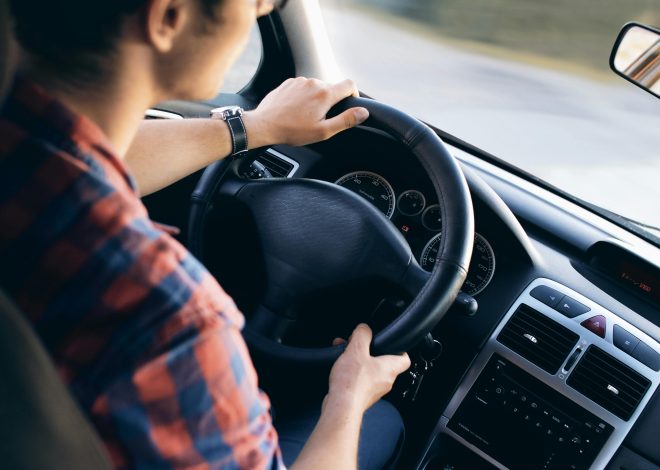
What Is Defensive Driving and Why Is It Important?
Introduction
Defensive driving is more than a set of rules—it’s a proactive mindset that keeps you and others safe on the road. By anticipating hazards, staying alert, and reacting appropriately, defensive drivers reduce crash risk and minimize the severity of unavoidable incidents. Whether you’re commuting to work, running errands, or embarking on a long road trip, mastering defensive driving techniques not only protects lives but can also save you money on insurance and vehicle repairs. In this post, we’ll explore what defensive driving entails, its core principles, practical strategies, and the tangible benefits of making defensive driving your default approach behind the wheel.

What Is Defensive Driving?
Defensive driving is a collection of skills and attitudes that enable drivers to expect the unexpected, recognize potential hazards early, and respond in a way that prevents collisions. Unlike “aggressive” or “offensive” driving, which focuses on speed and assertiveness, defensive driving prioritizes safety, courtesy, and risk management.
Core Principles of Defensive Driving
- Awareness: Continuously scan your surroundings—mirrors, blind spots, intersections, and weather conditions.
- Anticipation: Predict what other drivers, pedestrians, or cyclists might do next.
- Preparedness: Keep your vehicle in good condition and ensure you’re physically and mentally ready to drive.
- Adaptability: Adjust your speed and following distance to road, traffic, and weather conditions.
- Decision-Making: Choose the safest course of action—whether it’s braking, accelerating, or changing lanes—based on the situation.
Real-Life Analogy: Defensive driving is like playing chess on the road—you’re always thinking several moves ahead to outmaneuver potential threats.
Why Is Defensive Driving Important?
1. Reduces Crash Risk
By maintaining adequate space buffers and anticipating hazards, defensive drivers have more time to react, drastically lowering the likelihood of collisions.
- Example: On wet roads, a 3-second following distance in dry conditions becomes 6–8 seconds safely, preventing rear-end crashes.
2. Minimizes Crash Severity
If an accident is unavoidable, defensive techniques—such as controlled braking and evasive steering—can reduce impact forces and injuries.
- Expert Insight: Studies show that braking smoothly and maintaining vehicle control can decrease collision speed by up to 30%, significantly cutting occupant injury risk.
3. Saves Money
Fewer crashes mean lower repair bills and reduced insurance premiums. Many insurers offer discounts to drivers who complete certified defensive driving courses.
- Statistic: Completing a state-approved defensive driving course can shave 5–10% off your car insurance premium and remove a ticket point from your driving record in many jurisdictions.
4. Enhances Fuel Efficiency
Smooth acceleration and braking—hallmarks of defensive driving—not only improve safety but also boost gas mileage by up to 20%.

5. Promotes Courtesy and Reduces Stress
Adopting a defensive mindset encourages patience and respect for other road users, resulting in a calmer, more cooperative driving environment.
Real-Life Analogy: Defensive driving transforms rush-hour traffic from a battlefield into a coordinated dance, where everyone moves at a safe, harmonious pace.
Key Defensive Driving Techniques
1. Maintain the “3-Second Rule”
- How It Works: Pick a fixed point on the road (a sign or tree). When the vehicle ahead passes it, count “one thousand one, one thousand two, one thousand three.” If you pass before you finish counting, increase your distance.
- Why It Matters: Creates a time buffer to perceive hazards and react accordingly.
2. Perform Regular “IPDE” Scans
- Identify: Spot potential hazards—stopped cars, pedestrians, cyclists.
- Predict: Anticipate what might happen next—will the pedestrian step into the road?
- Decide: Determine your safest response—slow down, change lanes, or stop.
- Execute: Carry out the chosen action smoothly and decisively.
3. Avoid Blind Spots and Use Mirrors
- Check Often: Glance at rearview and side mirrors every 5–8 seconds.
- Shoulder Check: Before changing lanes, quickly look over your shoulder to ensure no vehicles linger in your blind spot.
4. Control Speed for Conditions
- Weather Adaptation: Slow down in rain, snow, fog, or heavy wind.
- Curve Navigation: Reduce speed before entering a curve rather than braking mid-turn, which can lead to skidding.
5. Keep Both Hands on the Wheel
- 9 and 3 O’Clock Grip: Promotes precise steering control and reduces injury risk if the airbag deploys.
- Avoid Distractions: No texting, eating, or adjusting infotainment while driving.
6. Manage Intersections Safely
- Scan Ahead: Look for turning vehicles or obstructed views.
- Stale Green Light: If a light has been green for a while, expect it to change soon—preparedness avoids abrupt stops.
7. Evasive Maneuvers
- Braking vs. Steering: When facing an imminent collision, know whether it’s safer to brake in a straight line or steer around the obstacle.
- Threshold Braking: Apply firm pressure up to the point just before wheels lock for maximal stopping power without skidding.
Defensive Driving in Special Situations
Night Driving
- Headlight Use: Dim high beams for oncoming traffic; use them in unlit areas for better visibility.
- Speed Adjustment: Reduce speed by 10–20% at night to account for decreased visibility.
Highway Driving
- Merge Early: Signal and merge into gaps smoothly rather than stopping at on-ramps.
- Stay Right: Use the left lane for passing only; lingering in fast lanes causes frustration and unsafe maneuvers.

Adverse Weather
- Rain: Reduce speed, avoid standing water, and increase following distance.
- Snow/Ice: Use winter tires, accelerate gently, and allow for much longer braking distances.
- Fog: Use low beams or fog lights; follow painted road markers rather than the taillights of the car ahead.
Benefits of Formal Defensive Driving Courses
Many jurisdictions and insurance companies recognize certified defensive driving programs as a reliable way to instill safe driving habits. These courses typically cover:
- Advanced hazard recognition
- Collision avoidance techniques
- State traffic law updates
- Practical on-track or simulated driving exercises
Outcome: Graduates often receive insurance discounts, ticket dismissal, and enhanced confidence behind the wheel.
Conclusion
Defensive driving isn’t an optional extra—it’s an essential approach that elevates safety, saves money, and promotes a more pleasant driving experience for everyone. By adopting core defensive techniques like the 3-second rule, IPDE scanning, proper mirror use, and speed adaptation, you’ll be well-prepared to handle everyday hazards and unexpected challenges. Enrolling in a certified defensive driving course can further hone your skills and even reduce insurance costs. Commit today to becoming a defensive driver—your life, your passengers, and your wallet will thank you.



